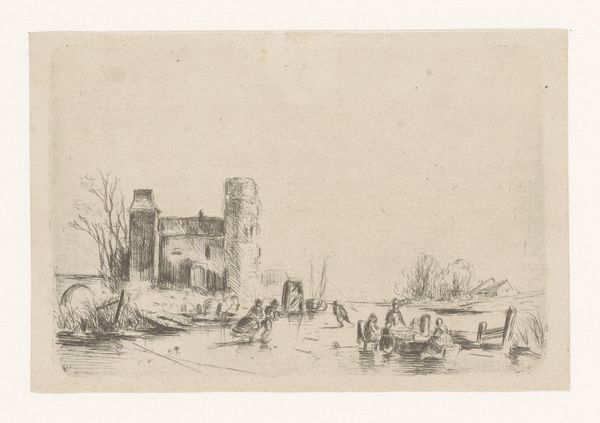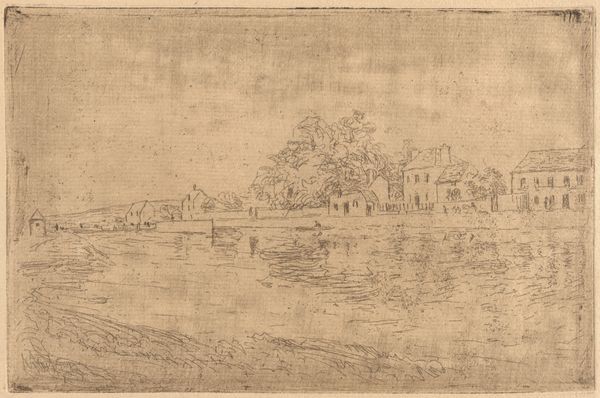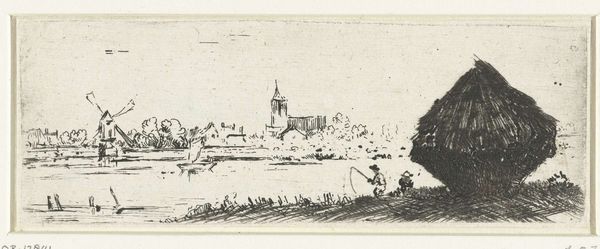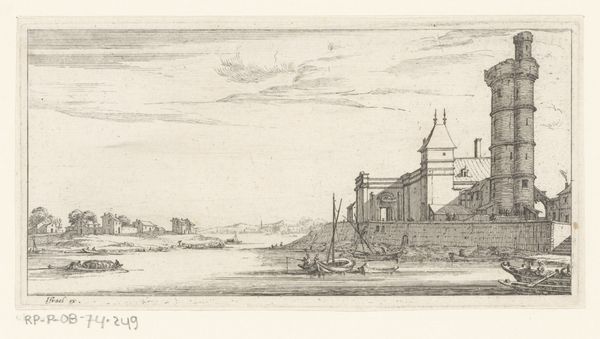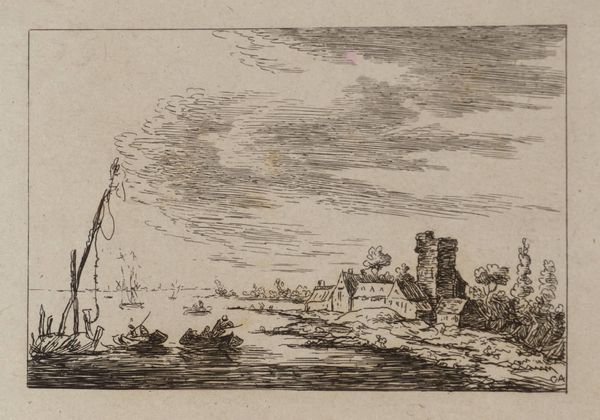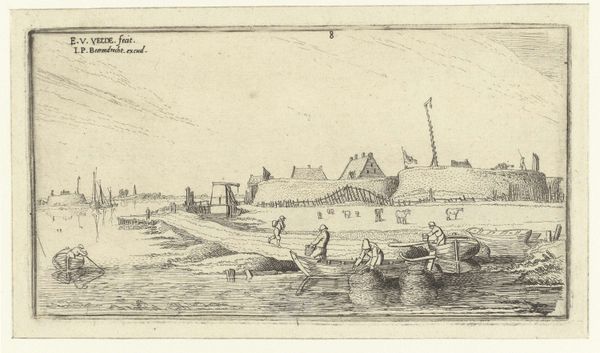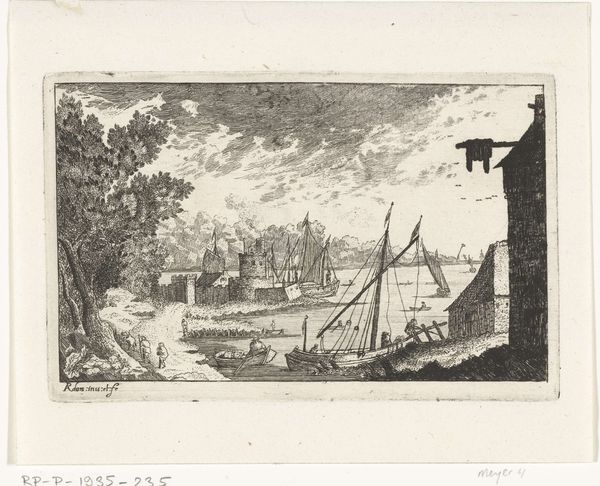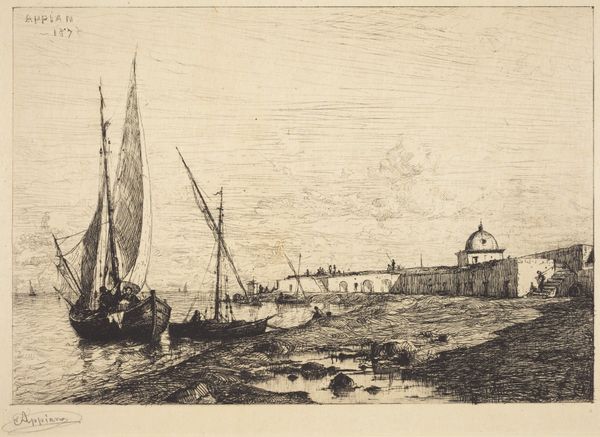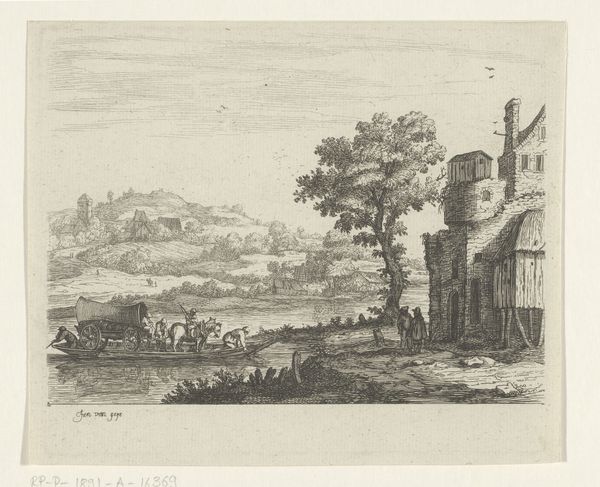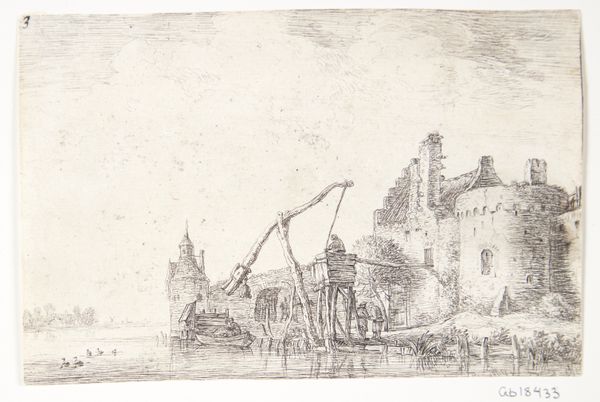
Ten Landscapes: Walled River Town to the Left of a River 1615 - 1616
0:00
0:00
drawing, print, paper, engraving
#
drawing
#
dutch-golden-age
# print
#
pen sketch
#
landscape
#
paper
#
cityscape
#
history-painting
#
engraving
Dimensions: 87 × 177 mm (image/plate); 97 × 187 mm (sheet)
Copyright: Public Domain
Esaias van de Velde etched this landscape showing a walled river town sometime before 1630. The swans in the water are visual symbols of purity and grace, a motif seen throughout art history since the classical period. The presence of swans has carried diverse meanings, symbolizing love and beauty in Renaissance paintings, and even aristocratic elegance in later works. Consider Leda and the Swan, a motif representing the complexities of desire and vulnerability. The graceful swan here is a much simpler evocation of purity. Its continuous reappearance reflects a collective fascination with these creatures. This fascination taps into our subconscious associations, evolving to mirror cultural values and aesthetic preferences across time. Swans elicit a sense of awe and wonder, engaging viewers on a deep, subconscious level. Like the meandering river, the symbolism of the swan demonstrates a non-linear, cyclical progression, resurfacing and evolving across different historical contexts.
Comments
No comments
Be the first to comment and join the conversation on the ultimate creative platform.
